Flag of the United States
|
||||||||||||||
|
||||||||||||||
|
||||||||||||||
The national flag of the United States of America (the "American flag") consists of thirteen equal horizontal stripes of red (top and bottom) alternating with white, with a blue rectangle in the canton (referred to specifically as the "union") bearing fifty small, white, five-pointed stars arranged in nine offset horizontal rows of six stars (top and bottom) alternating with rows of five stars. The fifty stars on the flag represent the 50 states and the 13 stripes represent the original thirteen colonies that rebelled against the British monarchy and became the first states in the Union.[1] Nicknames for the flag include the "Stars and Stripes", "Old Glory,"[2] and "The Star-Spangled Banner" (also the name of the national anthem).
Contents |
Symbolism
The flag of the United States is one of the nation's most widely recognized symbols. Within the U.S. it is frequently displayed, not only on public buildings, but on private residences. It is also used as a motif on decals for car windows, and clothing ornaments such as badges and lapel pins. Throughout the world it is used in public discourse to refer to the U.S., not only as a nation, state, government, and set of policies, but also as a set of ideals.
Apart from the numbers of stars and stripes representing the number of current and original states, respectively, and the union with its stars representing a constellation, there is no legally defined symbolism to the colors and shapes on the flag.
Design
Specifications

The basic design of the current flag is specified by 4 U.S.C. § 1; 4 U.S.C. § 2 outlines the addition of new stars to represent new states. The specification gives the following values:
- Hoist (width) of the flag: A = 1.0
- Fly (length) of the flag: B = 1.9[3]
- Hoist (width) of the Union: C = 0.5385 (A × 7/13, spanning seven stripes)
- Fly (length) of the Union: D = 0.76 (B × 2/5, two fifths of the flag length)
- E = F = 0.0538 (C/10, One tenth of the width of the Union)
- G = H = 0.0633 (D/12, One twelfth of the length of the Union)
- Diameter of star: K = 0.0616
- Width of stripe: L = 0.0769 (A/13, One thirteenth of the flag width)
These specifications are contained in an executive order which, strictly speaking, governs only flags made for or by the U.S. federal government.[4] In practice, most U.S. national flags available for sale to the public have a different length-to-width ratio; common sizes are 2 × 3 ft. or 4 × 6 ft. (flag ratio 1.5), 2.5 × 4 ft. or 5 × 8 ft. (1.6), or 3 × 5 ft. or 6 × 10 ft. (1.667). Even flags flown over the U.S. Capitol for sale to the public through Representatives or Senators are provided in these sizes.[5] Flags that are made to the prescribed 1.9 ratio are often referred to as "G-spec" (for "government specification") flags.
Colors
The exact white, red, and blue colors to be used in the flag are specified with reference to the CAUS Standard Color Reference of America, 10th edition. Specifically, the colors are “White”, “Old Glory Red”, and “Old Glory Blue”.[6] The CIE coordinates for the colors of the 9th edition of the Standard Color Card were formally specified in JOSA in 1946.[7] These colors form the standard for cloth, and there is no perfect way to convert them to RGB for display on screen or CMYK for printing. The “relative” coordinates in the following table were found by scaling the luminous reflectance relative to the flag’s “white”.
| Name | Absolute | Relative | ||||||||||||||||
|---|---|---|---|---|---|---|---|---|---|---|---|---|---|---|---|---|---|---|
| CIELAB D65 | Munsell | CIELAB D50 | sRGB | GRACoL 2006 | ||||||||||||||
| L* | a* | b* | H | V/C | L* | a* | b* | R | G | B | 8-bit hex | C | M | Y | K | |||
| White | 88.7 | −0.2 | 5.4 | 2.5Y | 8.8/0.7 | 100.0 | 0.0 | 0.0 | 1.000 | 1.000 | 1.000 | #FFFFFF | .000 | .000 | .000 | .000 | ||
| Old Glory Red | 33.9 | 51.2 | 24.7 | 5.5R | 3.3/11.1 | 39.9 | 57.3 | 28.7 | .698 | .132 | .203 | #B22234 | .196 | 1.000 | .757 | .118 | ||
| Old Glory Blue | 23.2 | 13.1 | −26.4 | 8.2PB | 2.3/6.1 | 26.9 | 11.5 | −30.3 | .234 | .233 | .430 | #3C3B6E | .886 | .851 | .243 | .122 | ||
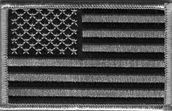
As with the design, the official colors are only officially required for flags produced for the U.S. federal government, and other colors are often used for mass-market flags, printed reproductions, and other products intended to evoke flag colors. The practice of using more saturated colors than the official cloth is not new. As Taylor, Knoche, and Granville wrote in 1950: “The color of the official wool bunting [of the blue field] is a very dark blue, but printed reproductions of the flag, as well as merchandise supposed to match the flag, present the color as a deep blue much brighter than the official wool.”[9]
Sometimes, Pantone Matching System (PMS) approximations to the flag colors are used. One set was given on the website of the US Embassy in London as early as 1998; the website of the U.S. embassy in Stockholm claimed in 2001 that those had been suggested by Pantone, and that the U.S. Government Printing Office preferred a different set. A third red was suggested by a California Military Department document in 2002.[10] In 2001, the Texas legislature specified that the colors of the Texas flag should be “(1) the same colors used in the United States flag; and (2) defined as numbers 193 (red) and 281 (dark blue) of the Pantone Matching System.”[11]
| Source | PMS | CIELAB D50 | sRGB | GRACoL 2006 | |||||||||
|---|---|---|---|---|---|---|---|---|---|---|---|---|---|
| L* | a* | b* | R | G | B | 8-bit hex | C | M | Y | K | |||
| Safe | 100.0 | 0.0 | 0.0 | 1.000 | 1.000 | 1.000 | #FFFFFF | .000 | .000 | .000 | .000 | ||
| U.S. Emb., London |
193 C | 42.1 | 64.4 | 26.7 | .756 | .076 | .238 | #C1133D | .165 | 1.000 | .678 | .063 | |
| 281 C | 15.4 | 7.0 | −41.8 | .000 | .149 | .388 | #002663 | 1.000 | .906 | .388 | .231 | ||
| U.S. Emb., Stockholm |
186 C | 44.1 | 67.8 | 37.9 | .800 | .048 | .185 | #CC0C2F | .122 | 1.000 | .796 | .035 | |
| 288 C | 18.0 | 7.6 | −50.3 | .000 | .172 | .466 | #002C77 | 1.000 | .863 | .357 | .141 | ||
| CA Mil. Dept. | 200 C | 41.1 | 64.2 | 30.8 | .745 | .051 | .203 | #BE0D34 | .169 | 1.000 | .749 | .074 | |
The 49- and 50-star unions
When Alaska and Hawaii were being considered for statehood in the 1950s, more than 1,500 designs were spontaneously submitted to President Dwight D. Eisenhower. Although some of them were 49-star versions, the vast majority were 50-star proposals. At least three of these designs were identical to the present design of the 50-star flag.[13] At the time, credit was given by the executive department to the United States Army Institute of Heraldry for the design.
Of these proposals, one created by 17-year old Robert G. Heft in 1958 as a school project has received the most publicity. His mother was a seamstress, but refused to do any of the work for him. He originally received a B- for the project. After discussing the grade with his teacher, it was agreed (somewhat jokingly) that if the flag was accepted by Congress, the grade would be reconsidered. Heft's flag design was chosen and adopted by presidential proclamation after Alaska and before Hawaii was admitted into the union in 1959.[14] Both the 49- and 50-star flags were each flown for the first time ever at Fort McHenry on the Fourth of July one year apart, 1959 and 1960 respectively.[15]
Decoration
Traditionally, the flag may be decorated with golden fringe surrounding the perimeter of the flag as long as it does not deface the flag proper. Ceremonial displays of the flag, such as those in parades or on indoor posts, often use fringe to enhance the beauty of the flag. The first recorded use of fringe on a flag dates from 1835, and the Army used it officially in 1895. No specific law governs the legality of fringe, but a 1925 opinion of the attorney general addresses the use of fringe (and the number of stars) "...is at the discretion of the Commander in Chief of the Army and Navy..." as quoted from footnote in previous volumes of Title 4 of the United States Code law books and is a source for claims that such a flag is a military ensign not civilian. However, according to the Army Institute of Heraldry, which has official custody of the flag designs and makes any change ordered, there are no implications of symbolism in the use of fringe.[16] Several federal courts have upheld this conclusion.[17][18] Traditionally, the Army and Air Force use a fringed National Color for parade, color guard and indoor display, while the Sea Services (Navy, Marine Corps and Coast Guard) use a fringeless National Color for all uses.
Display and use
The flag is customarily flown year-round at most public buildings, and it is not unusual to find private houses flying full-size flags. Some private use is year-round, but becomes widespread on civic holidays like Memorial Day, Veterans Day, Presidents' Day, Flag Day, and on Independence Day. On Memorial Day it is common to place small flags by war memorials and next to the graves of U.S. war veterans. Also on Memorial Day it is common to fly the flag at half staff, until noon, in remembrance of those who lost their lives in war while fighting for the U.S.
Flag etiquette
The United States Flag Code outlines certain guidelines for the use, display, and disposal of the flag. For example, the flag should never be dipped to any person or thing, unless it is the ensign responding to a salute from a ship of a foreign nation. (This tradition may come from the 1908 Summer Olympics in London, where countries were asked to dip their flag to King Edward VII: the American flag bearer did not. Team captain Martin Sheridan is famously quoted as saying "this flag dips to no earthly king", though the true provenance of this quotation is unclear.[19][20])
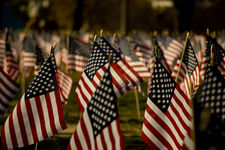
The flag should never be allowed to touch the ground and, if flown at night, must be illuminated. If the edges become tattered through wear, the flag should be repaired or replaced. When a flag is so tattered that it can no longer serve as a symbol of the United States, it should be destroyed in a dignified manner, preferably by burning. The American Legion and other organizations regularly conduct flag-burning ceremonies, often on Flag Day, June 14. It is a common myth that if a flag touches the ground or becomes soiled, it must be burned as well. While a flag that is currently touching the ground and a soiled flag are unfit for display, neither situation is permanent and thus the flag does not need to be burned if the unfit situation is remedied.[21]
Significantly, the Flag Code prohibits using the flag "for any advertising purpose" and also states that the flag "should not be embroidered, printed, or otherwise impressed on such articles as cushions, handkerchiefs, napkins, boxes, or anything intended to be discarded after temporary use".[22] Both of these codes are generally ignored, almost always without comment.
One of the most commonly ignored and misunderstood aspects of the Flag Code is section 8. "The flag should never be used as wearing apparel, bedding, or drapery." Section 3 of the Flag Code [23] defines a flag for the purposes of the code. It clarifies the definition to include any picture or representation of the flag purporting to be of the flag of the United States of America. Therefore T-shirts, or other apparel made of or containing a representation of the flag are in violation of the code.

Although the Flag Code is U.S. Federal law, it is only binding on government institutions displaying the flag: there is no penalty for a private citizen or group failing to comply with the Flag Code and it is not widely enforced—indeed, punitive enforcement would conflict with the First Amendment right to freedom of speech.[24] Passage of the proposed Flag Desecration Amendment would overrule legal precedent that has been established.

Display on vehicles and uniforms
When the flag is affixed to the side of a vehicle or uniform, it should be oriented so that the union is towards the front. This is done to give the impression that the flag is blowing backwards from its hoist as the vehicle or wearer moves forward. Therefore, U.S. flag decals (or patches) on the right sides of vehicles (or uniforms) may appear to be "reversed", with the union to the observer's right instead of left as more commonly seen.
The rule dates back to the Army's early history, when both mounted cavalry and infantry units would designate a standard bearer, who carried the Colors into battle. As he charged, his forward momentum caused the flag to stream back. Since the Stars and Stripes are mounted with the canton closest to the pole, that section stayed to the right, while the stripes flew to the left. [25]
Places of continuous display
By presidential proclamation, acts of Congress, and custom, American flags are displayed continuously at certain locations.
- Replicas of the Star Spangled Banner Flag (15 stars, 15 stripes) are flown at two sites in Baltimore, Maryland: Fort McHenry National Monument and Historic Shrine[26] and Flag House Square.[27]
- Marine Corps War Memorial (Raising the Flag on Iwo Jima), Arlington, Virginia[28]
- Lexington, Massachusetts Town Green[29]
- The White House, Washington, D.C.[30]
- Fifty U.S. Flags are displayed continuously at the Washington Monument, Washington, D.C.[31]
_near_Washington_DC.jpg)
- At U.S. Customs and Border Protection Ports of Entry that are continuously open.[32]
- A Civil War era flag (for the year 1863) flies above Pennsylvania Hall (Old Dorm) at Gettysburg College{{[33]}}. This building, occupied by both sides at various points of the Battle of Gettysburg, served as a lookout and battlefield hospital.
- Grounds of the National Memorial Arch in Valley Forge NHP, Valley Forge, Pennsylvania[34]
- By custom, at the Maryland home, birthplace, and grave of Francis Scott Key; at the Worcester, Massachusetts, war memorial; at the plaza in Taos, New Mexico (since 1861); at the United States Capitol (since 1918); and at Mount Moriah Cemetery in Deadwood, South Dakota.
- Slover Mountain (Colton Liberty Flag), in Colton, California. July 4, 1917 to circa. 1952 & 1997 to present.[35][36][37]
- At the ceremonial South Pole as one of the 12 flags representing the signatory countries of the original Antarctic Treaty.
- The surface of the Moon, having been placed there by the astronauts of Apollo 11, Apollo 12, Apollo 14, Apollo 15, Apollo 16 and Apollo 17.
Particular days for display

The flag should especially be displayed at full staff on the following days:
- January: 1 (New Year's Day) 3rd. Monday of the month (Dr. Martin Luther King, Jr.'s birthday) and 20 (Inauguration Day, once every four years)
- February: 12 (Lincoln's birthday) and the third Monday (Presidents' Day, originally Washington's birthday which is the 22nd)
- May: Third Saturday (Armed Forces Day) and last Monday (Memorial Day; half-staff until noon)
- June: 14 (Flag Day)
- July: 4 (Independence Day)
- September: First Monday (Labor Day) and 17 (Constitution Day)
- October: Second Monday (Columbus Day) and 27 (Navy Day)
- November: 11 (Veterans Day) and fourth Thursday (Thanksgiving Day)
- and such other days as may be proclaimed by the President of the United States; the birthdays of states (date of admission); and on state holidays.
Display at half-staff
The flag is displayed at half-staff (half-mast in naval usage) as a sign of respect or mourning. Nationwide, this action is proclaimed by the president; state-wide or territory-wide, the proclamation is made by the governor. In addition, there is no prohibition against municipal governments, private businesses or citizens flying the flag at half-staff as a local sign of respect and mourning. However, many flag enthusiasts feel this type of practice has somewhat diminished the meaning of the original intent of lowering the flag to honor those who held high positions in federal or state offices. President Dwight D. Eisenhower issued the first proclamation on March 1, 1954, standardizing the dates and time periods for flying the flag at half-staff from all federal buildings, grounds, and naval vessels; other congressional resolutions and presidential proclamations ensued. However, they are only guidelines to all other entities: typically followed at state and local government facilities, and encouraged of private businesses and citizens.

To properly fly the flag at half-staff, one should first hoist it briskly to the top of the pole, then slowly lower it to three-quarters of the height of the pole. Similarly, when the flag is to be lowered from half-staff, it should be first hoisted briskly to the top of the pole, then lowered slowly to the base of the flagpole.
Federal guidelines state the flag should be flown at half-staff at the following dates/times:
- May 15 - Peace Officers Memorial Day, unless it is the third Saturday in May, Armed Forces Day, full-staff all day[38]
- Last Monday in May - Memorial Day (until noon)
- July 27 - Korean War Veterans Day (expired 2003 − reinstated 2009)[39][40]
- September 11 - Patriot Day[41]
- First Sunday in October - Start of Fire Prevention Week.[42][43]
- December 7 - National Pearl Harbor Remembrance Day [44]
- For 30 days - Death of a president or former president
- For 10 days - Death of a vice president, Supreme Court chief justice/retired chief justice, or speaker of the House of Representatives.
- From death until the day of interment - Supreme Court associate justice, member of the Cabinet, former vice president, president pro-tempore of the Senate, or the majority and minority leaders of the Senate and House of Representatives. Also for federal facilities within a state or territory, for the governor.
- On the day after the death - Senators, members of Congress, territorial delegates or the resident commissioner of the commonwealth of Puerto Rico
Further, the flag is always flown at half-staff at four locations in the United States. These locations are Post Cemetery at Mackinac Island in Michigan, Punchbowl in Honolulu, the Gettysburg National Cemetery, and Arlington National Cemetery
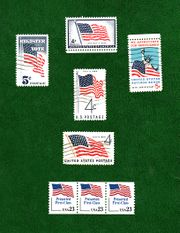
The American Flag on US Postage
The American Flag did not appear in any form on US Postal stamp issues until the Battle of White Plains Issue was released in 1926, and there it displays the 'Betsy Ross' flag with its circle of 13 stars. The 48 star flag first appeared on the General Pulaski issue of 1931 however the depiction there is noticeable at best. The first U.S. Postage stamp to feature the American Flag by itself with the Flag being the sole subject was issued July 4, 1957, displayed at the top of the photo to the right.[45]
Folding for storage

Though not part of the official Flag Code, according to military custom, flags should be folded into a triangular shape when not in use. To properly fold the flag:
- Begin by holding it waist-high with another person so that its surface is parallel to the ground.
- Fold the lower half of the stripe section lengthwise over the field of stars, holding the bottom and top edges securely.
- Fold the flag again lengthwise with the blue field on the outside.
- Make a rectangular fold then a triangular fold by bringing the striped corner of the folded edge to meet the open top edge of the flag. Starting the fold from the left side over to the right
- Turn the outer end point inward, parallel to the open edge, to form a second triangle.
- The triangular folding is continued until the entire length of the flag is folded in this manner (usually thirteen triangular folds, as shown at right). On the final fold, any remnant that does not neatly fold into a triangle (or in the case of exactly even folds, the last triangle) is tucked into the previous fold.
- When the flag is completely folded, only a triangular blue field of stars should be visible.

Use in funerals
Traditionally, the flag of the United States plays a role in military funerals,[46] and occasionally in those over other civil servants (such as the President). A burial flag is draped over the deceased's casket as a pall during services. Just prior to the casket being lowered into the ground, the flag is ceremonially folded and presented to the deceased's next of kin as a token of respect.[47]
History
The flag has been changed 26 times since the new, 13-state union adopted it. The 48-star version went unchanged for 47 years, until the 49-star version became official on July 4, 1959 (the first July 4 following Alaska's admission to the union on January 3, 1959). The 47-years of the 48-star version had been the longest time the flag went unmodified until July 5, 2007, when the 50-star version of the Flag of the United States broke the record.
First flag
|
|
At the time of the signing of the Declaration of Independence, July 4, 1776, the United States had no official national flag. The Grand Union Flag has historically been referred to as the "First National Flag"; although it has never had any official status, it was used early in the American Revolutionary War[48] by George Washington and formed the basis for the design of the first official U.S. flag. It closely resembles the British East India Company flag of the same era that was used from 1707, and an argument dating to Sir Charles Fawcett in 1937 holds that the Company flag indeed inspired the design.[49], in addition to Buckminster Fuller's mention of it in his book, Critical Path. However, the Company flag could have from 9 to 13 stripes, and was not allowed to be flown outside the Indian Ocean.[50] Both flags could have been easily constructed by adding white stripes to a British Red Ensign, a common flag throughout Britain and its colonies.
The stripes of the British East India Company flag may have been inspired in the Senyera, the flag of the Crown of Aragon who dominated Mediterranian Sea, changing the yellow and red colours for the Saint George´s red and white.

Another theory holds that the red-and-white stripe—and later, stars-and-stripes—motif of the flag may have been based on the Washington family coat of arms, first used to identify the family in the twelfth century, when one of George Washington's ancestors took possession of Washington Old Hall, then in County Durham, north-east England, which consisted of a shield "argent, two bars gules, above, three mullets gules" (a white shield with two red bars below three red stars).[51]
The Flag Resolution of 1777
On June 14, 1777, the Marine Committee of the Second Continental Congress passed the Flag Resolution which stated: "Resolved, That the flag of the United States be thirteen stripes, alternate red and white; that the union be thirteen stars, white in a blue field, representing a new Constellation."[52] Flag Day is now observed on June 14 of each year. A false tradition holds that the new flag was first hoisted in June 1777 by the Continental Army at the Middlebrook encampment.[53]
|
|
The 1777 resolution was probably meant to define a naval ensign, rather than a national flag. It appears between other resolutions from the Marine Committee. On May 10, 1779, Secretary of the Board of War Richard Peters expressed concern "it is not yet settled what is the Standard of the United States."[54]
The Flag Resolution did not specify any particular arrangement, number of points, nor orientation for the stars. The pictured flag shows 13 outwardly-oriented five-pointed stars arranged in a circle, the so-called Betsy Ross flag. Although the Betsy Ross legend is controversial, the design is among the oldest of any U.S. flags. Popular designs at the time were varied and most were individually crafted rather than mass-produced. Other examples of 13-star arrangements can be found on the Francis Hopkinson flag, the Cowpens flag, and the Brandywine flag. Given the scant archaeological and written evidence, it is unknown which design was the most popular at that time.
Despite the 1777 resolution, a number of flags only loosely based on the prescribed design were used in the early years of American independence. One example may have been the Guilford Court House Flag, traditionally believed to have been carried by the American troops at the Battle of Guilford Court House in 1781.[55]
The origin of the stars and stripes design is inadequately documented. The apocryphal story credits Betsy Ross for sewing the first flag from a pencil sketch handed to her by George Washington. No evidence for this exists; indeed, nearly a century had passed before Ross' grandson, William Canby, first publicly suggested it.[56] Another woman, Rebecca Young, has also been credited as having made the first flag by later generations of her family. Rebecca Young's daughter was Mary Pickersgill, who made the Star Spangled Banner Flag.
It is likely that Francis Hopkinson of New Jersey, a signer of the Declaration of Independence, designed the 1777 flag while he was the Chairman of the Continental Navy Board's Middle Department, sometime between his appointment to that position in November 1776 and the time that the flag resolution was adopted in June 1777. This contradicts the Betsy Ross legend, which suggests that she sewed the first Stars and Stripes flag by request of the government in the Spring of 1776.[52][57] Hopkinson was the only person to have made such a claim during his own lifetime, when he sent a bill to Congress for his work. He asked for a "Quarter Cask of the Public Wine" as payment initially. The payment was not made, however, because it was determined he had already received a salary as a member of Congress, and he was not the only person to have contributed to the design.[58] No one else contested his claim at the time.
Later flag acts
|
|
In 1795, the number of stars and stripes was increased from 13 to 15 (to reflect the entry of Vermont and Kentucky as states of the union). For a time the flag was not changed when subsequent states were admitted, probably because it was thought that this would cause too much clutter. It was the 15-star, 15-stripe flag that inspired Francis Scott Key to write "The Star-Spangled Banner", now the national anthem.
On April 4, 1818, a plan was passed by Congress at the suggestion of U.S. Naval Captain Samuel C. Reid[59] in which the flag was changed to have 20 stars, with a new star to be added when each new state was admitted, but the number of stripes would be reduced to 13 so as to honor the original colonies. The act specified that new flag designs should become official on the first July 4 (Independence Day) following admission of one or more new states. The most recent change, from 49 stars to 50, occurred in 1960 when the present design was chosen, after Hawaii gained statehood in August 1959. Before that, the admission of Alaska in January 1959 prompted the debut of a short-lived 49-star flag.[60]
As of July 4, 2007, the 50-star flag has become the longest rendition in use.
The "Flower Flag" arrives in Asia
Compared to the flags of many other nations, the flag of the United States is notably complex, leading to expressions such as Huāqíguó ("flower flag nation"), a Chinese name for America used in the 19th and early 20th centuries.[61]
The U.S. flag was brought to the city of Canton (Guǎngzhōu) in China in 1785 by the merchant ship Empress of China, which carried a cargo of ginseng.[62] There it gained the designation "Flower Flag [花旗]."[63] According to author and U.S. Naval officer George H. Preble:
When the thirteen stripes and stars first appeared at Canton much curiosity was excited among the people. News was circulated that a strange ship had arrived from the farther end of the world, bearing a flag as beautiful as a flower. Everybody went to see the Fah-kay-cheun [花旗船], or flower-flag ship. This name at once established itself in the language, and America is now called Fah-kay-gawk [花旗國], the flower-flag country, and an American, Fah-kay-gawk-yun [花旗國人], flowerflag country man, — a more complimentary designation than that of red-headed barbarian, the name first bestowed on the Dutch.[62]
The above quote romanizes the Chinese words from spoken Cantonese. In Mandarin, the official Chinese language, "Flower Flag Nation" is rendered as Huāqíguó (花旗國).[61] These names were common usage in the nineteenth and early twentieth centuries. Other Asian nations have equivalent terms for America, for example Hoa Kỳ ("Flower Flag") in Vietnam. In modern times, however, Chinese refer to the US as Měiguó (美国), Měi being short for Měilìjiān (Chinese name for "America") and "guó" meaning "country," a name unrelated to the flag.
The U.S. flag took its first trip around the world in 1787-90 on board the Columbia.[63] William Driver, who coined the phrase Old Glory, took the U.S. flag around the world in 1831-32.[63] The flag attracted the notice of Japanese when an oversized version was carried to Yokohama by the steamer Great Republic as part of a round-the-world journey in 1871.[64]
Historical progression of designs
In the following table depicting the 28 various designs of the United States flag, the star patterns for the flags are merely the usual patterns, often associated with the United States Navy. Canton designs, prior to the proclamation of the 48-star flag, had no official arrangement of the stars. Furthermore, the exact colors of the flag were not standardized until 1934.[65]
| No. of Stars |
No. of Stripes |
Design(s) | States Represented by New Stars |
Dates in Use | Duration |
|---|---|---|---|---|---|
| 0 | 13 |  |
N/A | December 3, 1775[66] – June 14, 1777 | 1½ years (18 months) |
| 13 | 13 |   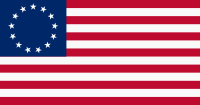  |
Delaware, Pennsylvania, New Jersey, Georgia, Connecticut, Massachusetts, Maryland, South Carolina, New Hampshire, Virginia, New York, North Carolina, Rhode Island |
June 14, 1777 – May 1, 1795 | 18 years (215 months) |
| 15 | 15 |  |
Vermont, Kentucky | May 1, 1795 – July 3, 1818 | 23 years (278 months) |
| 20 | 13 |   |
Indiana, Louisiana, Mississippi, Ohio, Tennessee |
July 4, 1818 – July 3, 1819 | 1 year (12 months) |
| 21 | 13 |  |
Illinois | July 4, 1819 – July 3, 1820 | 1 year (12 months) |
| 23 | 13 |  |
Alabama, Maine | July 4, 1820 – July 3, 1822 | 2 years (24 months) |
| 24 | 13 |  |
Missouri | July 4, 1822 – July 3, 1836 1831 term "Old Glory" coined) |
14 years (168 months) |
| 25 | 13 |  |
Arkansas | July 4, 1836 – July 3, 1837 | 1 year (12 months) |
| 26 | 13 |   |
Michigan | July 4, 1837 – July 3, 1845 | 8 years (96 months) |
| 27 | 13 |  |
Florida | July 4, 1845 – July 3, 1846 | 1 year (12 months) |
| 28 | 13 |  |
Texas | July 4, 1846 – July 3, 1847 | 1 year (12 months) |
| 29 | 13 |   |
Iowa | July 4, 1847 – July 3, 1848 | 1 year (12 months) |
| 30 | 13 |  |
Wisconsin | July 4, 1848 – July 3, 1851 | 3 years (36 months) |
| 31 | 13 |  |
California | July 4, 1851 – July 3, 1858 | 7 years (84 months) |
| 32 | 13 |  |
Minnesota | July 4, 1858 – July 3, 1859 | 1 year (12 months) |
| 33 | 13 |     |
Oregon | July 4, 1859 – July 3, 1861 | 2 years (24 months) |
| 34 | 13 |  |
Kansas | July 4, 1861 – July 3, 1863 | 2 years (24 months) |
| 35 | 13 |  |
West Virginia | July 4, 1863 – July 3, 1865 | 2 years (24 months) |
| 36 | 13 |   |
Nevada | July 4, 1865 – July 3, 1867 | 2 years (24 months) |
| 37 | 13 |   |
Nebraska | July 4, 1867 – July 3, 1877 | 10 years (120 months) |
| 38 | 13 |   |
Colorado | July 4, 1877 – July 3, 1890 | 13 years (156 months) |
| 43 | 13 |  |
Idaho, Montana, North Dakota, South Dakota, Washington |
July 4, 1890 – July 3, 1891 | 1 year (12 months) |
| 44 | 13 |  |
Wyoming | July 4, 1891 – July 3, 1896 | 5 years (60 months) |
| 45 | 13 |  |
Utah | July 4, 1896 – July 3, 1908 | 12 years (144 months) |
| 46 | 13 |  |
Oklahoma | July 4, 1908 – July 3, 1912 | 4 years (48 months) |
| 48 | 13 |  |
Arizona, New Mexico | July 4, 1912 – July 3, 1959 | 47 years (564 months) |
| 49 | 13 |  |
Alaska | July 4, 1959 – July 3, 1960 | 1 year (12 months) |
| 50 | 13 |  |
Hawaii | July 4, 1960 – present | 50 years (607 months) |
Future of the flag
The United States Army Institute of Heraldry has prepared designs for flags with up to 56 stars, should additional states accede, using a similar staggered star arrangement. There are political movements supporting statehood in Puerto Rico (by the New Progressive Party of Puerto Rico) and the District of Columbia, among other areas.
|
|
Similar national flags
|
|
|
- The flag of Bikini Atoll is symbolic of the islanders' belief that a great debt is still owed to the people of Bikini because in 1954 the United States government detonated a thermonuclear bomb on the island as part of the Castle Bravo test.
- The flag of Liberia bears a close resemblance, showing the ex-American-slave origin of the country. The Liberian flag has 11 similar red and white stripes, which stand for the 11 signers of the declaration there, as well as a blue square with only a single large white star for the union.
- The flag of Malaysia also has a striking resemblance, with red and white stripes (14 total), and a blue canton, but displaying instead of stars a star and crescent emblem. This might be due, however, to the great influence of the British East India Company, rather than the later United States flag. Also quite similar is the flag of the Federation of Malaya, a predecessor to current day Malaysia.
|
|
|
|
- The flag of Togo resembles a Liberian flag with 5 stripes, though the colors are Pan-African colors.
- The Morning Star flag of the former Netherlands New Guinea is intentionally similar to the flag of the United States.
- The very short lived First Flag of the Republic of the United States of Brazil, (November 15–19, 1889) resembles the U.S flag, but uses Brazil's traditional colors of green, yellow, and blue instead of the U.S. flag's red, white, and blue. It was indeed designed to honor the U.S people and the 1776 revolution.
- The flag of El Salvador from 1865 to 1912. A different flag was in use, based on the flag of the United States, with a field of alternating blue and white stripes and a red canton containing white stars.
|
|
|
|
|
|
Other similar flags
The American Black and Gold flag, the flag of the Who Dat Nation, and an unofficial flag of the city of New Orleans, consists of 13 stripes in a repeating pattern of black, gold, bisque, gold, etc., and a black canton with 50 gold fleur-de-lys arranged like the stars on the US flag. It became more widely known after it was shown prominently in Spike Lee's documentary If God Is Willing and da Creek Don't Rise.
See also
- Ensign of the United States
- Flag Code
- Flag Desecration Amendment
- Flags of the Confederate States of America
- Flags of the United States
- Flags of the United States armed forces
- Flags of the U.S. states
- Gadsden flag
- Gallery of flags of United States cities
- Jack of the United States
- Old Glory
- Nationalism in the United States
Article sections
- Colors, standards and guidons: United States
- Flag desecration: United States
Associated persons
- Francis Bellamy (1855–1931), creator of the Pledge of Allegiance
- William Driver (1803–1886), who owned and named "Old Glory"
- Charles Fawcett, British historian who suggested the design is based on the flag of the British East India Company
- Thomas E. Franklin (1966–present), photographer of Ground Zero Spirit, better known as Raising the Flag at Ground Zero
- Christopher Gadsden (1724–1805), after whom the Gadsden flag is named
- Robert G. Heft (1941–2009), a designer of the current flag's canton
- Francis Hopkinson (1737–1791), designer (according to some historians)
- Jasper Johns (1930–), painter of Flag (1954–55), inspired by a dream of the flag
- John Paul Jones (1747–1792), who claimed to have first raised the Grand Union Flag aboard the Alfred in 1775
- Francis Scott Key (1779–1843), writer of "The Star-Spangled Banner"
- Mary Young Pickersgill (1776–1857), maker of the banner hoisted over Fort McHenry during the Battle of Baltimore
- Katha Pollitt (1949–present), author of a controversial essay on post-9/11 America and her refusal to fly an American flag
- George H. Preble (1816–1885), author of History of the American Flag (1872) and photographer of the Fort McHenry flag
- Joe Rosenthal (1911–2006), photographer of Raising the Flag on Iwo Jima
- Betsy Ross (1752–1836), creator of the first stars and stripes flag (according to legend)
- George Washington (1732–1799), who (according to legend) first sketched the stars and stripes design and on whose family arms the design may be based
References
Bibliography
- Allentown Art Museum. The American Flag in the Art of Our Country. Allentown Art Museum, 1976.
- Herbert Ridgeway Collins. Threads of History: Americana Recorded on Cloth 1775 to the Present. Smithsonian Institution Press, 1979.
- Grace Rogers Cooper. Thirteen-star Flags: Keys to Identification. Smithsonian Institution Press, 1973.
- David D. Crouthers. Flags of American History. Hammond, 1978.
- Louise Lawrence Devine. The Story of Our Flag. Rand McNally, 1960.
- William Rea Furlong, Byron McCandless, and Harold D. Langley. So Proudly We Hail: The History of the United States Flag. Smithsonian Institution Press, 1981.
- Scot M. Guenter, The American Flag, 1777–1924: Cultural Shifts from Creation to Codification. Fairleigh Dickinson University Press. 1990. online
- Marc Leepson, Flag: An American Biography. Thomas Dunne Books/St. Martin's Press, 2005.
- David Roger Manwaring. Render Unto Caesar: The Flag-Salute Controversy. University of Chicago Press, 1962.
- Boleslaw Mastai and Marie-Louise D'Otrange Mastai. The Stars and the Stripes: The American Flag as Art and as History from the Birth of the Republic to the Present. Knopf, 1973.
- Milo Milton Quaife. The Flag of the United States. 1942.
- Milo Milton Quaife, Melvin J. Weig, and Roy Applebaum. The History of the United States Flag, from the Revolution to the Present, Including a Guide to Its Use and Display. Harper, 1961.
- Albert M. Rosenblatt. "Flag Desecration Statutes: History and Analysis," Washington University Law Quarterly 1972: 193-237.
- Leonard A. Stevens. Salute! The Case of The Bible vs. The Flag. Coward, McCann & Geoghegan, 1973.
- Arnaldo Testi. Capture the Flag: The Stars and Stripes in American History (New York University Press; 2010) 192 pages. A European perspective on the symbolism and political, social, and cultural significance of the flag.
Notes
- ↑ States are represented collectively; there is no meaning to particular stars nor stripes.
- ↑ Coined by Captain William Driver, a nineteenth century shipmaster.
- ↑ Note that the flag ratio (B/A in the diagram) is not absolutely fixed. Although the diagram in Executive Order 10834 gives a ratio of 1.9, earlier in the order is a list of flag sizes authorized for executive agencies. This list permits eleven specific flag sizes (specified by height and width) for such agencies: 20.00 × 38.00; 10.00 × 19.00; 8.95 × 17.00; 7.00 × 11.00; 5.00 × 9.50; 4.33 × 5.50; 3.50 × 6.65; 3.00 × 4.00; 3.00 × 5.70; 2.37 × 4.50; and 1.32 × 2.50. Eight of these sizes conform to the 1.9 ratio, within a small rounding error (less than 0.01). However, three of the authorized sizes vary significantly: 1.57 (for 7.00 × 11.00), 1.27 (for 4.33 × 5.50) and 1.33 (for 3.00 × 4.00).
- ↑ Ex. Ord. No. 10834, August 21, 1959, 24 F.R. 6865 (governing flags "manufactured or purchased for the use of executive agencies", Section 22). Section 32 explains that, “As used in this order, the term "executive agencies" means the executive departments and independent establishments in the executive branch of the Government, including wholly-owned Government corporations.”
- ↑ Architect of the Capitol: "Flag Request Form", retrieved on 2009-06-25
- ↑ General Services Administration “Federal Specification DDD-F-416F: Flag, National, United States of America and Flag, Union Jack”. 31 March 2005.
- ↑ Genevieve Reimann, Deane B. Judd, and Harry J. Keegan (1946). “Spectrophotometric and Colorimetric Determination of the Colors of the TCCA Standard Color Cards”. JOSA 36(3), 128–159.
- ↑ In the 9th edition of the Standard Color Card of America, “White”, “Old Glory Red”, and “Old Glory Blue” were, respectively, Cable No. 70001, Cable No. 70180, and Cable No. 70075. The Munsell renotation coordinates for these were taken directly from the Reimann et al. paper, the CIELAB D65 coordinates were found by converting the xyY values in that paper to be relative to CIE Illuminant D65 from Illuminant C using the CAT02 chromatic adaptation transform, and relative to a perfect diffuse reflector as white. The “relative” values in the table were found by taking Cable No. 70001’s luminosity to be that of the white point, and were converted to D65 or D50 also using the CAT02 transformation. The values for CMYK were found by converting from the CIELAB D50 values using the Adobe CMM and the GRACoL 2006 ICC profile in Adobe Photoshop.
- ↑ Helen Taylor, Lucille Knoche, and Walter Granville, eds. (1950), Descriptive Color Names Dictionary. Container Corporation of America.
- ↑ In 1998, “U.S. Flag Facts” at the website of the U.S. Embassy in London listed the colors red PMS 193 and blue PMS 282 (presumably PMS solid coated colors). By October 2002, these had changed to red PMS 193 and blue PMS 281. These latter PMS equivalents are listed on many websites including various other US Government organizations, such as the Millennium Challenge Corporation’s website. See also “United States of America”, Flags of the World.
The website of the U.S. Embassy in Stockholm instead lists PMS 186 and PMS 288 as the colors specified by the U.S. Government Printing Office: “Colors of the U.S. Flag”. United States Embassy Stockholm. November 2001.
The Military Department of the State of California suggested PMS 200 for red in a 2002 document, “Flags over California, a history and guide”. - ↑ The Government Code; Title 11. State Symbols and Honors; Subtitle A; Chapter 3100.
- ↑ The values in this table were taken by converting the CIELAB D50 coordinates for PMS 193 C, 200 C, and 281 C given in the Pantone color palettes of Adobe Photoshop to sRGB and GRACoL using the Adobe CMM and the GRACoL 2006 and sRGB profiles in Photoshop. Since PMS 281 C (blue) is outside the gamut of sRGB, and both PMS 281 C and PMS 183 C (red) are outside the gamut of GRACoL, the RGB and CMYK values for those in the table below are necessarily less-colorful approximations to the colors of the Pantone swatches.
- ↑ These designs are in the Eisenhower Presidential Archives in Abilene, Kansas. Only a small fraction of them have ever been published.
- ↑ "Robert G. Heft: Designer of America's Current National Flag". USFlag.org: A website dedicated to the Flag of the United States of America. http://www.usflag.org/flagdesigner.html. Retrieved 2006-12-07.
- ↑ Rasmussen, Frederick N. "A half-century ago, new 50-star American flag debuted in Baltimore," The Baltimore Sun, Saturday, July 3, 2010.
- ↑ "Fringe on the American Flag". http://www.tioh.hqda.pentagon.mil/FAQ/FringeOnAmFlg.htm. Retrieved 2006-06-27.
- ↑ See McCann v. Greenway, 952 F. Supp. 647 (W.D. Mo. 1997), which discusses various court opinions denying any significance related to trim used on a flag.
- ↑ Rebuttal of "martial law flag" claims by tax protesters
- ↑ LA84 Foundation
- ↑ London Olympics 1908 & 1948
- ↑ Snopes.com: Flag Disposal. Retrieved June 14, 2008.
- ↑ 4 U.S.Code Sec. 8(i).
- ↑ 4 U.S.Code Chapter 1 Sec. 3
- ↑ Texas v. Johnson, 491 U.S. 397 (1989); United States v. Eichman, 496 U.S. 310 (1990).
- ↑ About.com
- ↑ Presidential Proclamation No. 2795, July 2, 1948 Code of Federal Regulations of the United States, Title 3 Compilation (1943-1948), HathiTrust, Google Books/University of Michigan scan, pages 212-213.
- ↑ Public Law 83-319, approved March 26, 1954
- ↑ Presidential Proclamation No. 3418, June 12, 1961
- ↑ Public Law 89-335, approved November 8, 1965
- ↑ Presidential Proclamation No. 4000, September 4, 1970
- ↑ Presidential Proclamation No. 4064, July 6, 1971, effective July 4, 1971
- ↑ Presidential Proclamation No. 4131, May 5, 1972
- ↑ http://www.gettysburg.edu/news_events/news_detail.dot?inode=2746067&pageTitle=34-star+flag+flies+over+Gettysburg+College+without+Congressional+approval
- ↑ Pub.L. 94−53, 89 Stat. 259, S.J.Res. 98, approved July 4, 1975
- ↑ With the consent of Congress, Old Glory kept perpetual shine, PE Press Archive.
- ↑ With the consent of Congress, Slover Mountain, The Sun, 14 May 2008
- ↑ By Act of Congress. California Portland Cement Co
- ↑ 36 U.S.C. Sec. 136
- ↑ 36 U.S.C. Sec. 127
- ↑ Pub.L. 111-41, 123 Stat. 1962, July 27, 2009.
- ↑ Patriot Day, 2005
- ↑ Public Law 107-51
- ↑ Presidential Proclamation Fire Prevention Week | The White House
- ↑ National Pearl Harbor Remembrance Day, 2007
- ↑ Scotts Specialized Catalogue of United States Postage Stamps
- ↑ "Sequence of Events for an Army Honors Funeral At Arlington National Cemetery". Arlington National Cemetery. http://www.arlingtoncemetery.org/ceremonies/military_funerals.html. Retrieved 2009-02-06.
- ↑ "Flag Presentation Protocol". Virginia Army National Guard. http://www.vi.ngb.army.mil/html/content/Flags/Flag_Presentation.htm. Retrieved 2009-02-06.
- ↑ Grand Union Flag
- ↑ The Striped Flag of the East India Company, and its Connexion with the American "Stars and Stripes" at Flags of the World
- ↑ East India Company (United Kingdom) at Flags of the World
- ↑ A 2002 BBC documentary featuring the town of Selby and Selby Abbey showed the coat of arms with the commentator referring to it as the inspiration for the U.S. Flag, a commonly held belief in Britain.
- ↑ 52.0 52.1 Federal Citizen Information Center: The History of the Stars and Stripes. Retrieved June 7, 2008.
- ↑ Guenter (1990)
- ↑ Mastai, 60
- ↑ Other evidence suggests it dates only to the nineteenth century. The original flag is at the North Carolina Historical Museum.
- ↑ Crews, Ed. "The Truth About Betsy Ross". http://www.history.org/Foundation/journal/Summer08/betsy.cfm. Retrieved 2009-06-27.
- ↑ Embassy of the United States of America [1]. Retrieved April 11, 2008.
- ↑ "Journals of the Continental Congress - Friday, October 27, 1780". Library of Congress. http://memory.loc.gov/cgi-bin/query/r?ammem/hlaw:@field(DOCID+@lit(jc01845)). Retrieved 3 Sept 2010.
- ↑ United States Government (1861) (PDF). Our Flag. Washington DC: United States Government Printing Office. S. Doc 105-013. http://frwebgate.access.gpo.gov/cgi-bin/getdoc.cgi?dbname=105_cong_documents&docid=f:sd013.105.pdf.
- ↑ "United States Flag History". United States Embassy. Archived from the original on 2008-02-25. http://web.archive.org/web/20080225142325/http://stockholm.usembassy.gov/usflag/flaghist.html. Retrieved 2009-02-03.
- ↑ 61.0 61.1 Chinese: 花旗國. See Chinese English Dictionary
Citibank, which founded a branch in China in 1902, is known as "Flower Flag Bank" (花旗銀行).
Olsen, Kay Melchisedech, Chinese Immigrants: 1850–1900 (2001), p. 7.
"Philadelphia's Chinatown: An Overview", The Historical Society of Pennsylvania.
Leonard, Dr. George, "The Beginnings of Chinese Literature in America: the Angel Island Poems". - ↑ 62.0 62.1 Preble, George Henry, History of the flag of the United States of America, (1880).
- ↑ 63.0 63.1 63.2 Tappan, Eva March, The Little Book of the Flag (1917), pp. 91–92.
- ↑ "American Flag Raised Over Buddhist Temple in Japan on July 4, 1872"
- ↑ (For alternate versions of the flag of the United States, see the Stars of the U.S. Flag page at the Flags of the World website.)
Further information: Territorial evolution of the United States
- ↑ Leepson, Marc. (2005). Flag: An American Biography. New York: St. Martin's Press.
External links
- A mathematician figures out the best way to jam an extra star onto the American flag. - By Chris Wilson - Slate Magazine
- Star power: 200 years of change (USA TODAY)
- United States at Flags of the World
- The Thirteen Stars and Stripes-A Survey of 18th Century Images of the US Flag
- U.S. Flag Etiquette (ushistory.org)
- U.S. Flag etiquette (americanflags.org)
- Congressional Research Service (CRS) Reports regarding the flag
- Encyclopedia Smithsonian: Facts About the United States Flag (citation needs to be updated)
- The Flag Code—U.S. Code Home: Title 4, Flag and Seal, Seat of Government, and the States—Chapter 1, The Flag
- Provides details about the design of the flag, treatment of the flag, the pledge of allegiance, etc.
- Executive Order No. 10798, with specifications and regulations for the current flag
- Is the American Flag Alive?
- Flag of the United States of America
- Civil Air Patrol - Flag Folding (YouTube) (Video on the proper folding of the United States flag)
|
||||||||||||||||||||||||||||||||||||||||||||||
|
||||||||||||||
|
||||||||
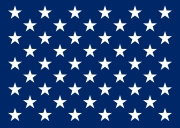
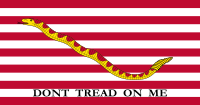

.svg.png)
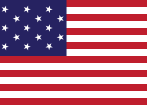
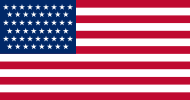





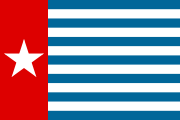






.svg.png)

